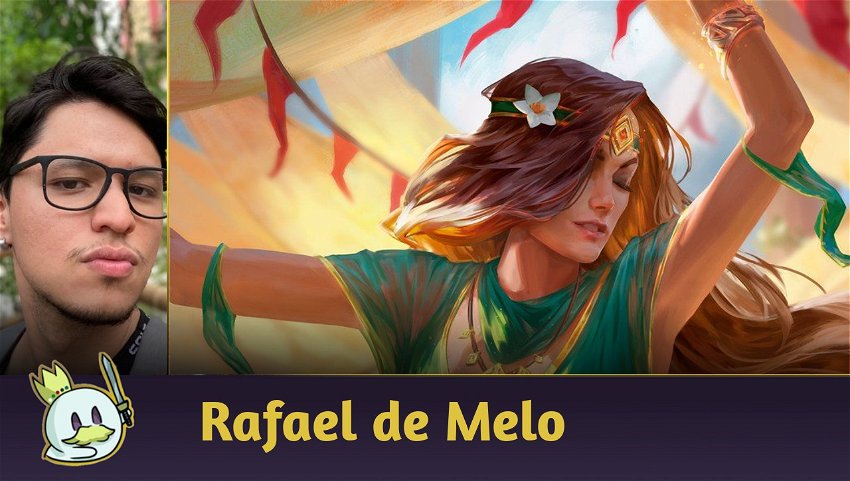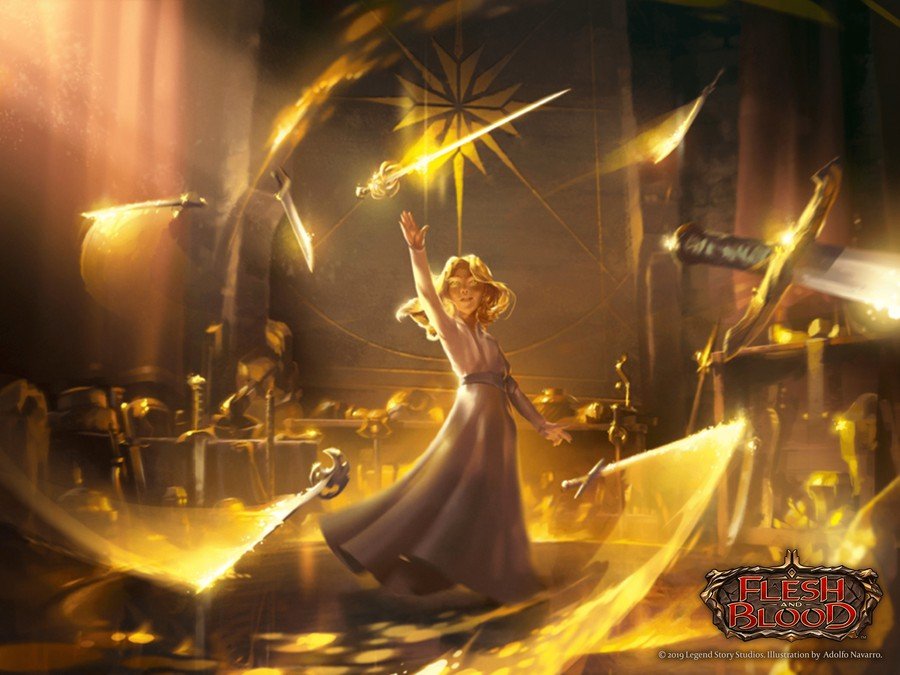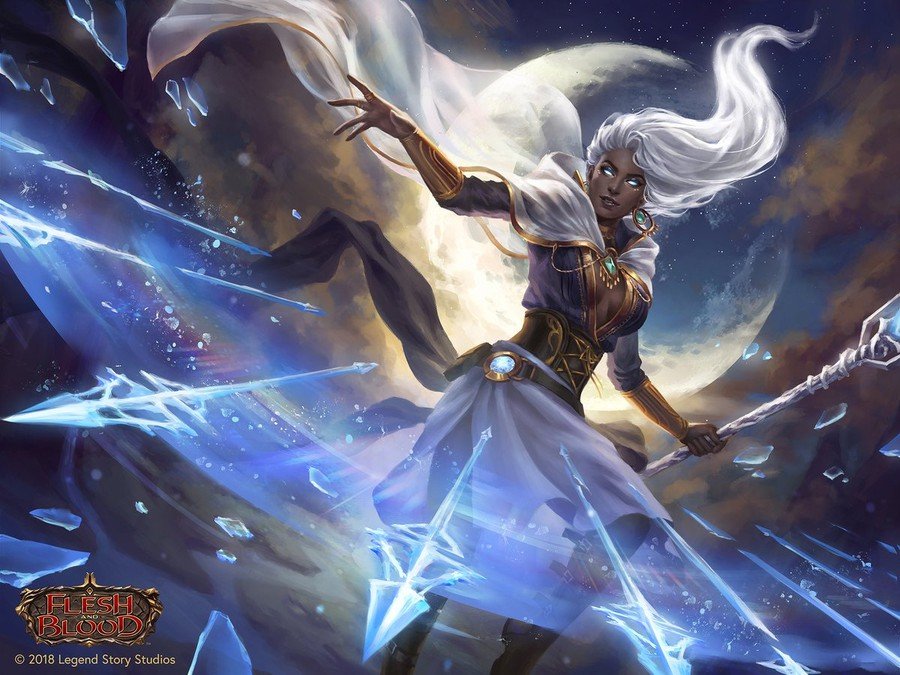About Staples
In my article about Commoner's staples, I showed how relevant it is to get cards that are stamped in the format. Obtaining these cards not only ensures that you have the best tools possible for a deck, it also allows you to build multiple decks that use them.
In the commons format, however, I haven't covered the rare, majestic, and legendaries (which are widely played in the Blitz and Classic Constructed formats), so today I'm going to fill in that gap and name the staples of those formats.
Although the other article is designed exclusively for the commons format, several of the cards mentioned in it apply here, for example, all defense reactions (Sink Below (1), Fate Foreseen (1) and Unmovable (1)) and all equipment, so I recommend you read it before moving on to this one.
Here I will work cards for both Blitz and Classic Constructed. Although the two formats have their own Metagames, their own dynamics and different deck building, the cards are shared between the formats and are equally useful.
Best Blitz and Classic Constructed Staples
Fyendal's Spring Tunic

Everyone who starts playing Flesh and Blood in a very short time discovers an equipment called Fyendal's Spring Tunic: either because of its high frequency in the lists or because of how mentioned the equipment is among players, and mainly because of its price.
The popular "Tunic" is not only one of the best pieces of equipment in the game, but also one of the most financially expensive, but that has its reasons. It can be used by any hero, it has a certain defense and, most importantly, it brings a way to gain a resource every three turns - and every player of other card games knows how hard it is to gain a resource at low cost (like Black Lotus and Innervate).
Due to the amount of time equipment takes to gain value, it may not be mandatory in Blitz format lists, but in Classic Constructed any deck will want a Tunic - except those that already have equipment that does an effect similar, like Teklo Foundry Heart.
Having a tunic makes deck building a lot easier - since it is one of the most expensive pieces of these decks and is used by many of them.
Crown of Providence and Arcanite Skullcap

The two equipments seem to do different things for different purposes, but their goals are identical for any list that doesn't have good helmet.
While, with a life handling, Arcanite Skullcap can block up to three damage, Crown of Providence blocks two, but with the possibility of exchanging the card from the arsenal or hand by drawing a card.
Until Uprising, Arcanite Skullcap was the most commonly used generic helm, and after the release of the crown, it's been losing more space - opening a discussion of which of the two equipment is better.
Arcanite Skullcap is still excellent equipment and is very welcome for any deck that lacks any efficient way to block arcane damage or wants to defend more, while Crown of Providence is more flexible and can protect your card from the arsenal of a Command and Conquer. And speaking of it,
Command and Conquer

In a general status, an attack with cost two, six power and three defense doesn't deviate from what other attacks with similar status have. However, what makes it so good and used on all lists that want to use a red attack is his ability.
With no restrictions, the attack cannot be blocked by any defensive reactions (such as Sink Below (1) and Unmovable (1)), but the strength of the card is in its on-hit effect of destroying the armory. It's too bad for the opponent to have to deal with this attack with an arsenal prepared for the following turns.
An excellent move to make with this card is to use it with Pummel (1), allowing the damage to pass with the guarantee that there will be no defense reactions and the arsenal is destroyed, in addition to the additional effect of the attack reaction.
Enlightened Strike

The zero-cost attack popularly called "E-strike" has a cost that can be painful and cannot be used without cards in hand, but this restriction is soon compensated with the versatility and potential that the attack presents. Possessing five power, three defense and “costing” zero is already outside the standards of attacks at the same cost, but with the variety of possibilities everything is compensated.
Each deck will want to use the card in different ways. Iyslander, Stormbind wants to deal as much damage as possible, while Fai, Rising Rebellion aims to go again to continue his attacks. The keyword of this card is versatility.
Art of War

Like Enlightened Strike, Art of War has a very useful versatility for several decks, and the card becomes stronger when we can select two of the modes it has.
Is it an aggressive deck that wants to deal as much damage as possible? Give your attack one more power and draw two new cards. Did the opponent present a threatening turn and need to block? Give one more block to your action cards and also block with your arsenal. Need to cadence attacks? Grant Go again for the next attack and draw two new cards. These are some of the possibilities that a single card can present.
As an example Fai, Rising Rebellion presents, as we call it, the “Art of War turn”, where the hero starts the turn with the instant and starts an extremely threatening combat chain (also combined with equipment like Mask of Momentum).
Sigil of Solace

Sigil of Solace (1) is simple and efficient at what it sets out to do: Gain three life. But there is one important feature that makes it better than Healing Balm (1).
The fact that it is an instant generic makes it possible to play without the need to be on your turn and without spending an action point. In the first turn, for example, we can use this card and start the game with three more life points, or even use it against opposing lethal damage.
Any deck that wants some kind of protection or that has a control plan on the sideboard (Like Dromai, Ash Artist and Oldhim, Grandfather of Eternity) will run a full set of the instant.
Snatch

Snatch (1) is a pretty standard attack for the other identical attacks, but its real strength is in drawing a card when hitting the opponent, and the difficulties start to appear when we try to block it.
Most action cards have three or two defense, and Snatch (1) have four power. So, for no damage to pass, we either defend with two cards with two defense, or a card with three defense and an equipment.
The perfect situation to use this attack is to play it at the end of your combat chain, draw a card and put it in your arsenal, but other plays are possible. Along with Snapdragon Scalers we can start the combat chain with it, grant it go again and, with the drawn card, boost the chain of attacks. Any aggressive deck that boosts the power of an attack, such as Briar, Warden of Thorns, will get great value out of this card.
Class specializations and equipment
As in the other article, I treated the generic staples to cover the largest number of decks that a pool can have. However, when we build a deck with a hero in mind, some cards are staples in those heroes: their specializations.
Specialization cards are cards that only a certain hero can use in their deck. Become the Arknight, despite being of the Runeblade class, can only be used by Viserai (both young and adult), for example. So, for most heroes, it's important to provide their specializations, especially for heroes where they stand out for the potential they bring to the functioning of the deck.
To name a few and examples:
Dorinthea Ironsong features threatening turns with the combination of her Glistening Steelblade and Steelblade Supremacy specializations where failing to block is not an option, in addition to the great tutor Singing Steelblade.
Iyslander, Stormbind have her specializations Frost Hex and Ice Eternal as a win condition, which, combined, can suddenly deal lethal damage.
Kano, Dracai of Aether uses his specialization Blazing Aether to end his combo turn and win the game.
Red Hot is an excellent attack on red-only Dromai, Ash Artist decks.
In addition to specializations, it is also interesting to provide equipment of the class in which we want to have a pool. If we wish to play Azalea, Ace in the Hole, for example, it's interesting to get New Horizon and Perch Grapplers because not only do we already have archer equipment, but we'll also have taken a great step to build Lexi, Livewire.
Conclusion
Having a pool not only has a meaning of collection, but also covers the entire vastness of decks that a player can assemble and provides flexibility at the time of assembly.
Although some of the cards presented here are financially salty, the investment is justifiable. Having a Fyendal's Spring Tunic means already having the most expensive equipment in Oldhim, Grandfather of Eternity, Iyslander, Stormbind, Arakni, Huntsman, Fai, Rising Rebellion among other heroes.
Investing in staples means not only thinking about a long-term investment, but also expanding the possibility of building different decks.
Thanks for the reading!














— Kommentare 0
, Reaktionen 1
Sei der erste der kommentiert